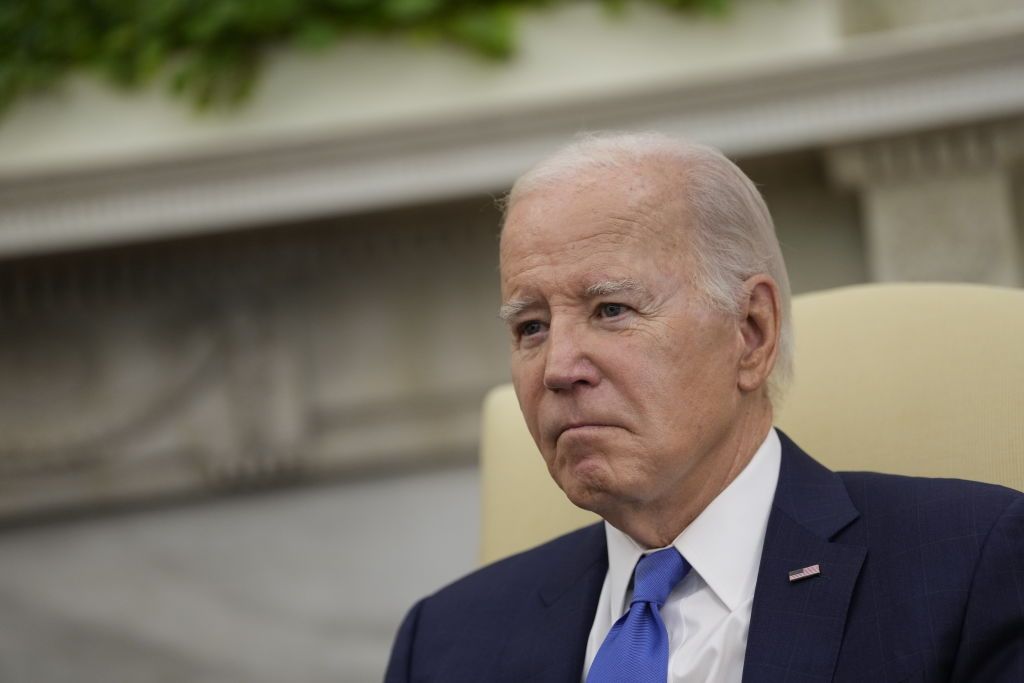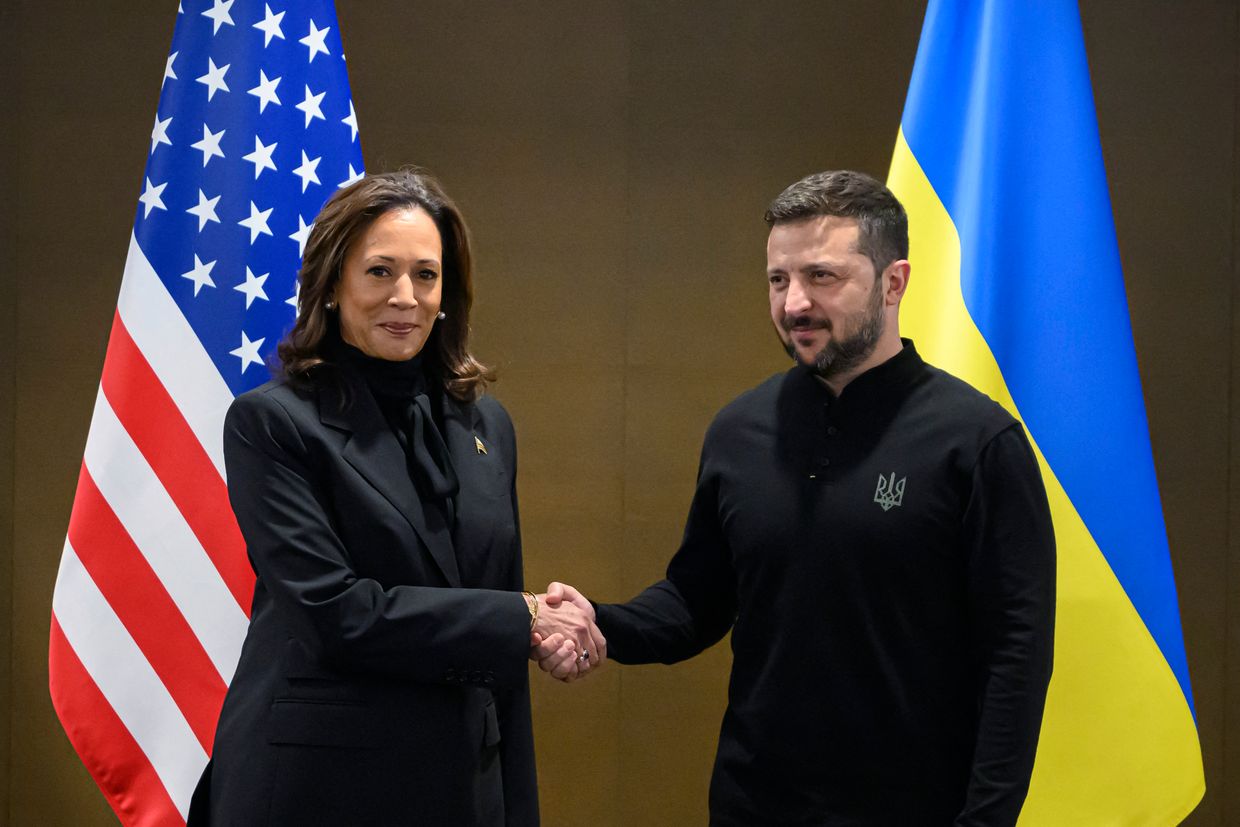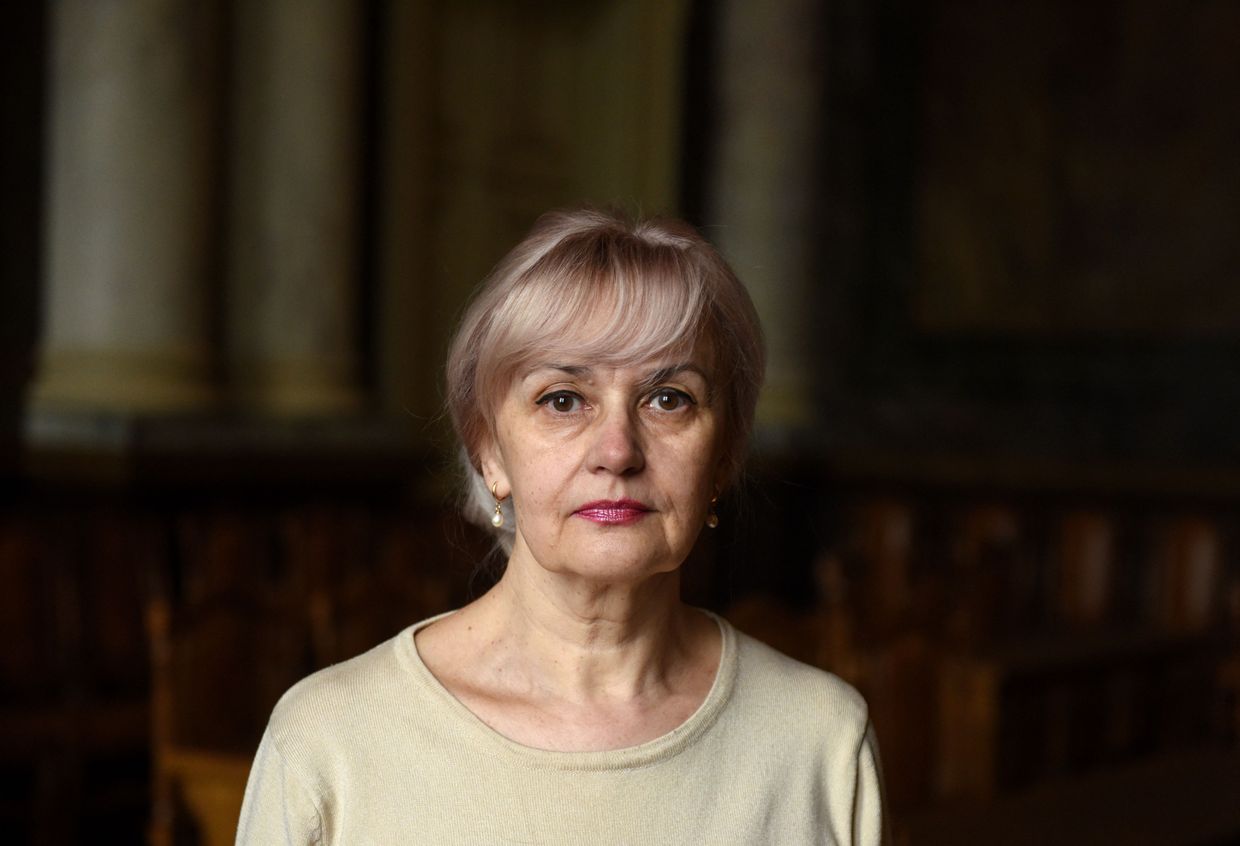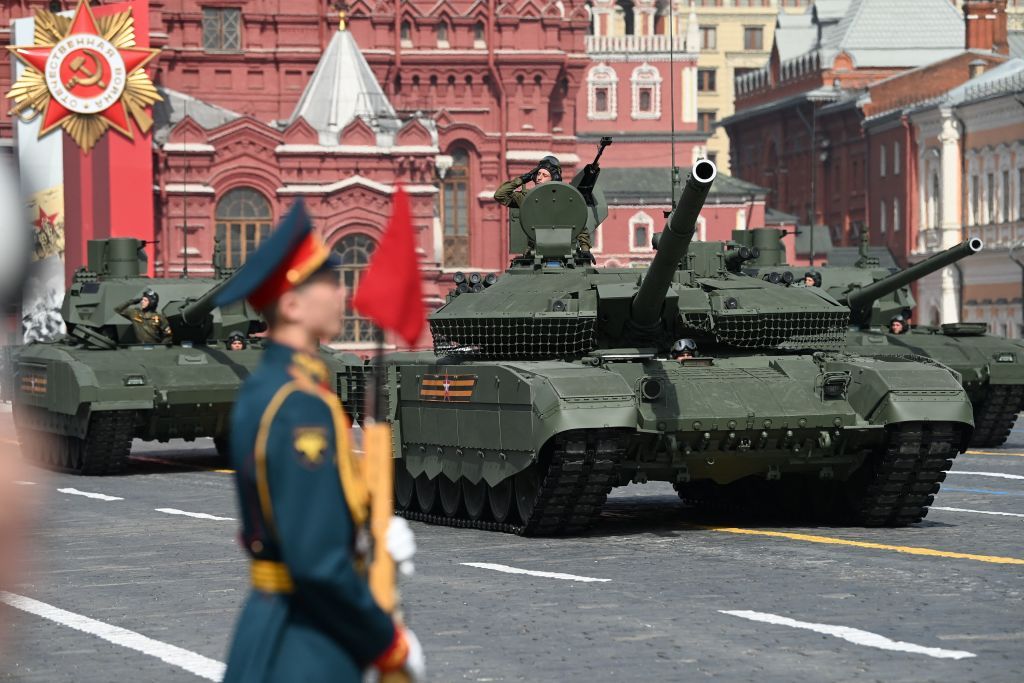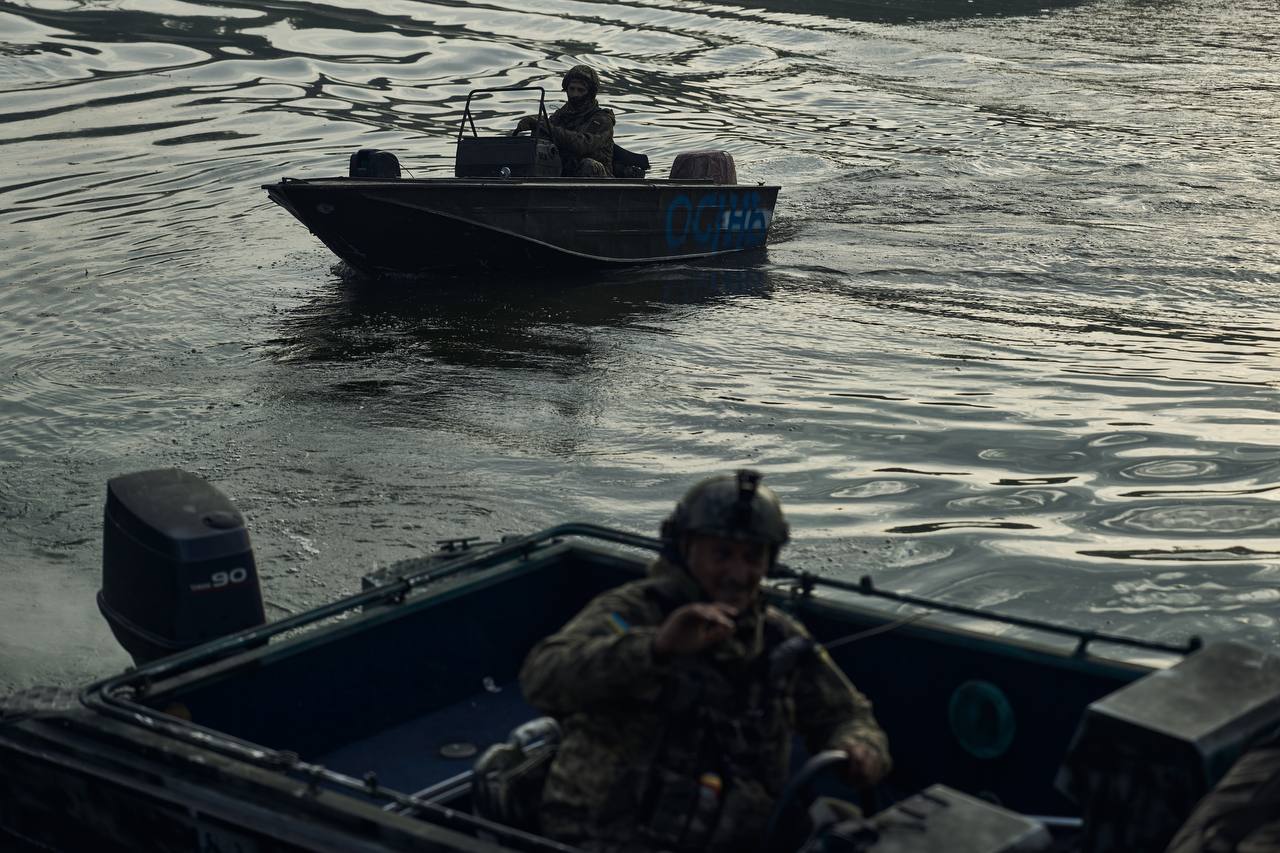Key developments on June 4:
- Biden: Peace in Ukraine doesn't mean NATO membership
- NATO 'land corridors' will rush US troops to front lines of any future European war, Telegraph reports
- Ukraine's use of German weapons to strike Russia will not 'contribute to escalation,' Scholz says
- Russian missile attack on Dnipro leaves 8 injured, including 2 children
Peace in Ukraine means a guarantee that Russia will never occupy the country again, but Kyiv's membership in NATO is not necessary for this, U.S. President Joe Biden said in an interview with Time published on June 4.
Biden said that he had not been prepared to support the "NATOization of Ukraine before." A part of the condition for peace in Ukraine is the relations with Kyiv, like with other countries, "where we supply weapons so they can defend themselves in the future."
"Peace looks like making sure Russia never, never, never, never occupies Ukraine. That's what peace looks like. And it doesn't mean NATO, they are part of NATO," Biden said.
Kyiv did not receive the much-desired invitation nor a firm deadline to join the alliance during the 2023 NATO summit in Vilnius, even though NATO took steps to tighten cooperation.
Ukrainian officials have voiced hope that the Washington meeting, scheduled for July 9-11, will bring a more definite signal.
Julianne Smith, U.S. Ambassador to NATO, said that Kyiv is unlikely to receive a membership invitation at the alliance's July summit, promising to offer a security package as a “bridge” to membership.
"The point is, though, that if we ever let Ukraine go down, mark my words: you will see Poland go, and you will see all those nations along the actual border of Russia, from the Balkans and Belarus, all those, they are going to make their own accommodations," Biden added.

NATO 'land corridors' will rush US troops to front lines of any future European war, Telegraph reports
NATO is creating a series of "land corridors" that would be used to rush U.S. troops across Europe to confront Russian forces in the event of a major conflict with Moscow, The Telegraph reported on June 4.
Warnings that the Kremlin could attack a NATO country in the near future have increased in urgency in recent months.
Eirik Kristoffersen, Norway's top general, said the military alliance only has two to three years to prepare, Bloomberg reported on June 3.
"At one point someone said it'll take 10 years (before Russia reconstitutes its offensive capacity), but I think we're back to less than 10 years because of the industrial base that is now running in Russia," Kristoffersen said.
At a NATO meeting in Vilnius last year, NATO leaders agreed to develop new plans to ensure the alliance could provide "300,000 troops at high readiness."
According to The Telegraph, U.S. troops and armor would land at one of five ports in the Netherlands, Greece, Italy, Turkey or Norway from where they would travel through land corridors to NATO countries bordering Ukraine.
These land corridors would be free of bureaucratic local restrictions which in the past have held up the movement of troops and armor, leaving them stuck at borders.
Previous NATO plans only allowed for U.S. troops to land at Rotterdam in the Netherlands, but Ukraine's experience of long-range missile attacks since the launch of the full-scale invasion has prompted a rethink.
Expanding the number of ports and having multiple land corridors would mean if one was hit, others would still be available to use.
"Everything is created in a way so the necessary resilience exists – robustness, reserves and also redundancies," Lt Gen Alexander Sollfrank, the chief of NATO’s Joint Support Enabling Command, told The Telegraph.
But concerns remain about NATO's air defense capabilities that would be needed to protect troops as they move across Europe.
More than two years into Russia's full-scale war on Ukraine, the air defense capabilities of NATO's eastern flank are only at 5% of the amount seen as necessary to deter an attack, the Financial Times (FT) reported on May 29, citing sources.
NATO members located in Central and Eastern Europe have publicized plans in recent weeks to improve their collective air defense in response to the Russian threat.
According to unnamed sources who spoke to the FT, the current air defense capabilities of NATO's eastern flank are far from sufficient.
Air defense is a "major part of the plan to defend eastern Europe from invasion," a NATO diplomat told the FT.
"And right now, we don't have that."

Ukraine's use of German weapons to strike Russia will not 'contribute to escalation,' Scholz says
Ukraine's use of German and other Western-supplied weapons to strike targets in Russia will not "contribute to escalation," German Chancellor Olaf Scholz told the Antenne Bayern radio station on June 3.
Berlin has long opposed lifting the ban on Ukraine's use of Western weapons to target Russia, but reversed course at the end of May amid growing calls from Western leaders to lift the restrictions.
A German government spokesperson told Deutsche Welle on May 31 that Ukraine can use German-supplied weapons to hit legitimate targets in Russia. Defense Minister Boris Pistorius later clarified that the decision applied to the area around Kharkiv, which has been the center of a renewed Russian offensive in recent weeks.
The statement from Scholz was the first time the chancellor publicly commented on the government's decision.
"We are certain that it will not contribute to an escalation because—as (U.S. President Joe Biden) has also described—it is only a matter of being able to defend a large city like Kharkiv," Scholz said.
In the past, Scholz has repeatedly cited a fear of escalation as among the principal reasons for limiting Germany's support for Ukraine.
"And I think it is clear to everyone that this must be possible. Under international law, this has always been possible anyway," Scholz said.
It is unclear what finally prompted the chancellor to change his mind, but Scholz said that he would not allow himself to be "pressured into making a decision that is not right and not timely."
After many months of hesitation, the White House partially lifted restrictions on Ukraine's ability to use U.S.-supplied weapons in Russia, but required that they only be used across the border from Kharkiv Oblast. Additional restrictions on the usage of U.S.-supplied long-range weapons remain in place.
Michael Carpenter, the senior director for Europe at the U.S. National Security Council, said later that the U.S. would allow Ukraine to strike targets in Russia across the border from both Kharkiv and Sumy oblasts with American-supplied weapons. He also said that the ban on ATACMS is still in effect.

Russian missile attack on Dnipro leaves 8 injured, including 2 children
Russia struck Ukraine's city of Dnipro with missiles overnight on June 4, causing fire, Governor Serhii Lysak said. At least eight civilians, including a one-month-old and a 17-year-old, were injured in the attack.
Air defense systems successfully intercepted and downed two missiles over the city, according to the governor.
The debris from missiles caused damage to civilian infrastructure. Over a dozen vehicles and dozens of buildings were affected.
More than 16 residential multi-story buildings have been damaged, as well as a hospital, a clinic, a school, and 31 houses, Mayor Borys Filatov said.
Russian forces also attacked the city of Nikopol with kamikaze drones, Lysak said. No casualties were reported there.
Air raid alerts were activated in a number of regions, including Dnipropetrovsk, Kherson, Zaporizhzhia, Donetsk, and Luhansk oblasts overnight on June 4. Ukraine's Air Force warned about the threat of missile attack.
In recent months, Russia has intensified its attacks against Ukraine's critical infrastructure in a renewed assault against the country's civilian sites and energy grid.
Russia's massive aerial assault follows the deadly bombing of the busy Kharkiv hypermarket in the middle of the day on May 25. The attack killed at least 19 people and injured 44. Hours later, a second Russian attack injured 25 people.



